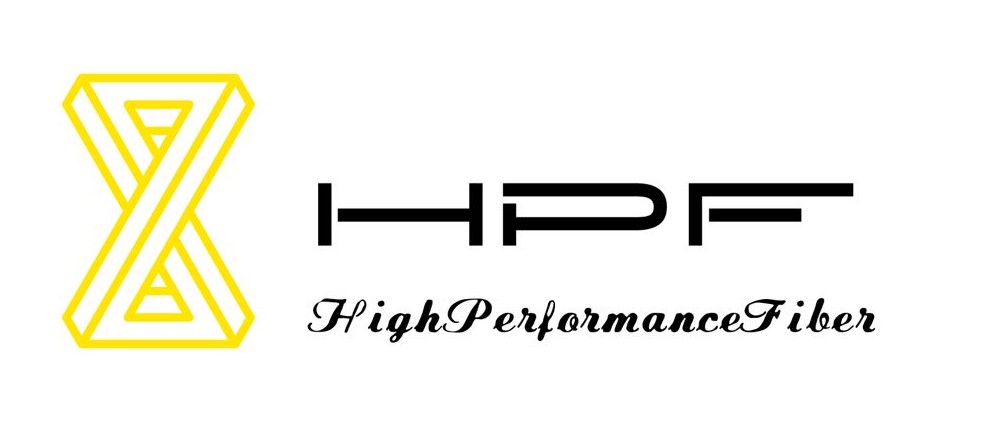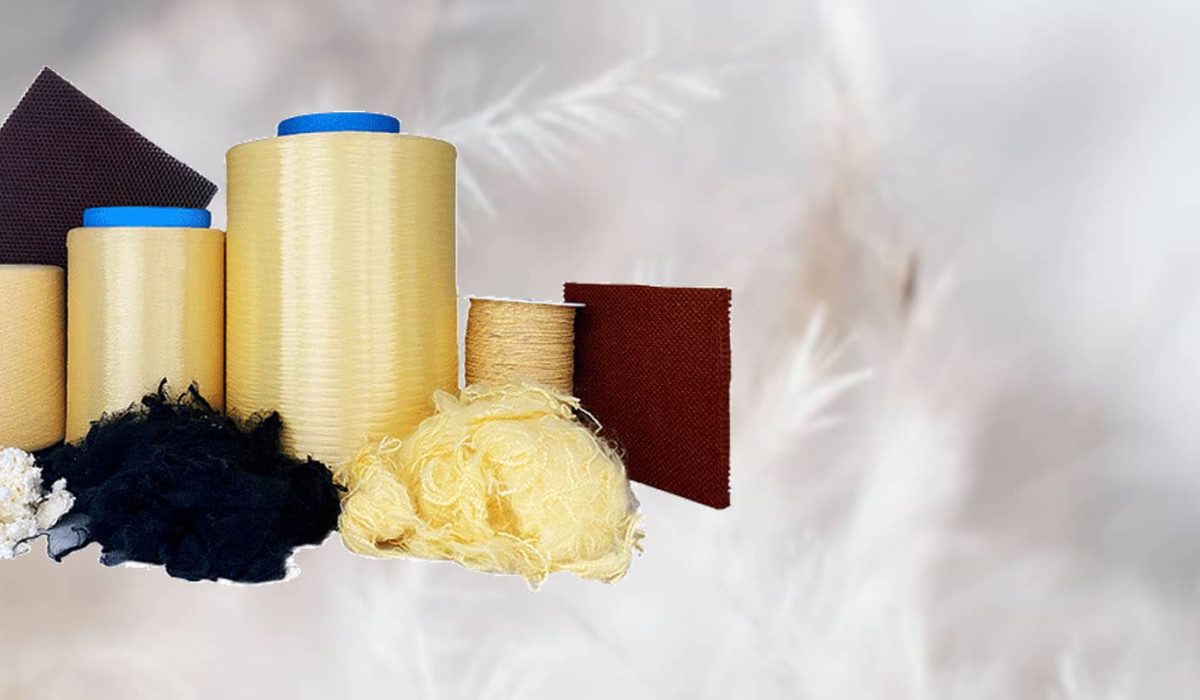Aramid fibers are primarily dyed using disperse dyes or cationic dyes. The color of aramid fibers is primarily achieved through carrier dyeing, non-aqueous medium dyeing, and structural coloration. Carrier dyeing is an important dyeing method for aramid fibers. By adjusting the dye bath temperature, the carrier regulates the dynamic behavior of the fiber macromolecular chains, alters the fiber’s glass transition temperature, weakens intermolecular hydrogen bonding forces, and provides more space for dye uptake, promoting the diffusion of dye molecules into the fiber interior and increasing dye uptake efficiency. Non-aqueous media primarily utilize solvents to alter the aggregate structure of the fibers and swell the aramid fibers. Appropriate non-aqueous solvents can regulate the morphology and structure of disperse dye aggregates and the aggregate structure of the fibers, swell the fibers, and promote the entry of dye molecules into the fiber interior, thereby improving the dyeing performance of the fibers.
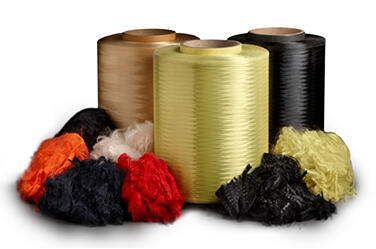
Picture sources Aramid | Products & Services | TEIJIN
Structural coloration involves introducing nanoparticles, adjusting their morphology and particle size, altering the color of the fabric, or incorporating high-refractive-index materials to construct periodic nanostructures. This is an environmentally friendly method of coloration that relies on the structure and arrangement of nanoparticles or photonic crystals.
META ARAMID FIBER
(1) Dyeing methods for unmodified aramid fibers
① Ultra-high-temperature dyeing method: The unique structure of aramid fibers results in a glass transition temperature as high as 270°C, significantly higher than that of fibers such as polyester. Therefore, when using conventional high-temperature, high-pressure dyeing methods (130°C), it is difficult to open the fibers sufficiently to accommodate a large number of dye molecules. An obvious improvement is to further increase the dyeing temperature, enhancing the mobility of the fiber’s macromolecular chains to increase dye uptake.
② Carrier Dyeing Method: The principle behind this method is that carriers with relatively low molecular weights and structures similar to those of aramid fibers can enter the fiber interior under high-temperature dyeing conditions, disrupting weak intermolecular forces such as hydrogen bonds between fibers. This significantly increases the swelling degree of aramid fibers, accelerating the diffusion rate of dye molecules within the fibers while also markedly enhancing fiber absorption of dye molecules, thereby improving dyeing depth. Since the carrier primarily acts on the amorphous regions of the fiber and has limited impact on crystalline regions, its effects on the thermal and mechanical properties of aramid are minimal.
③ Solvent dyeing method: This method uses non-aqueous solvents as the dyeing medium to dye aramid. Both the dye and the fiber are influenced by the solvent. The non-aqueous solvent effectively dissolves the dye, converting it into a single-molecule state, facilitating its entry into the fiber interior. The fibers also swell more due to the solvent, facilitating dye penetration into the fiber interior and improving dye uptake.
④ Supercritical CO₂ dyeing method: Supercritical CO₂ refers to a special fluid with both temperature and pressure above its critical point. When used as a dyeing medium, it enhances dye solubility and causes fiber swelling, increasing dye diffusion on the fiber and improving dye uptake.
⑤ Ionic Liquid Dyeing Method Ionic liquids used as dyeing media specifically refer to salts composed of anions and cations with a melting point below 100°C. During dyeing, ionic liquids can effectively dissolve dyes and have a certain etching effect on aramid fibers, increasing their surface roughness and providing more adsorption and dyeing sites for ionic dyes, thereby enhancing dyeing performance.
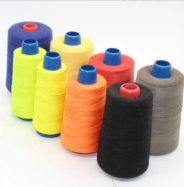
Picture Sources ko.impact-fibers.com
(2) Aromatic Nylon Modification and Coloring Methods
① Copolymer Modification Dyeing/Coloring Method Copolymer modification refers to the addition of a third monomer during the synthesis of polymers, resulting in the polymer chains containing a certain degree of other structures, thereby altering the properties of the resulting fibers. Aromatic nylon produced through copolymer modification is referred to as easily dyeable meta-aromatic nylon, which still requires the use of additional dyes for coloring. If colored monomers are added during copolymerization modification, colored aramid fibers can be directly obtained without additional dyeing.
②Blend Modification Dyeing Method Polymer blending refers to the process of mixing two or more homopolymers or copolymers to form a macroscopically uniform material. Blend modification enhances the dyeing performance of aramid fibers by introducing small molecules or polymers before spinning to disrupt the regularity of macromolecules. Blending modification has mild conditions, is easy to operate, has low equipment requirements, and holds promise for industrial-scale production.
③ Solution dyeing method The solution dyeing method involves adding dyes to the spinning solution or melt to obtain colored polymers or melts, which are then directly spun into colored fibers. Currently, the production of solution-dyed fibers primarily uses the masterbatch method and the dye paste method. Color masterbatch refers to aggregates formed by uniformly loading super-high amounts of pigments onto resin. The color masterbatch method involves adding color masterbatch and other additives during the spinning process to produce colored fibers according to the color requirements of the fibers. The color paste method involves mixing colorants (pigments/dyes), dispersants, and solvents to form a liquid color paste, which is then added to the solution to produce colored fibers.
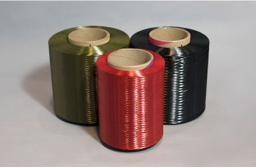
Dope Dyeing Aramid Long Fiber
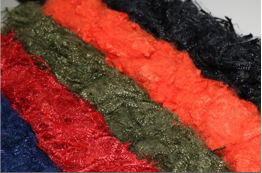
Dope Dyeing aramid staples
Picture Source www.tyho.com.cn
④ High-energy radiation irradiation pretreatment dyeing method uses X-rays and other high-energy electron beams to treat aramid fibers, causing partial breakage of intermolecular hydrogen bonds on the surface of the aramid fibers and amide bonds on the main chain of the molecules, which then react with oxygen in the air to introduce new active groups. Irradiation treatment can also disrupt the ordered orientation and crystalline structure of the fiber surface, increasing surface roughness and thereby enhancing the ability of aramid fibers to adsorb dyes.
⑤ Plasma pretreatment dyeing method Plasma is an ionized gaseous substance composed of ions, electrons, and uncharged neutral particles, categorized into high-temperature and low-temperature plasma. Low-temperature plasma is typically used for fiber treatment. Low-temperature plasma induces physical etching and chemical modification on the surface of aramid fibers, altering their molecular structure and thereby improving dyeing performance.
⑥ Solvent pretreatment dyeing method Solvent pretreatment involves using various organic solvents to pre-treat aramid fibers before dyeing, causing the fibers to swell, altering their morphological structure, and reducing their orientation and crystallinity, thereby preparing them for subsequent dye uptake.
⑦ Reagent Surface Treatment Dyeing Method Strong acids and alkalis can etch the surface of aramid fibers, increasing their surface roughness and thereby adsorbing more dye molecules, thereby improving the dyeing performance of aramid fibers.
⑧ Grafting Modification Dyeing Method Grafting involves using certain active groups as bridge groups to chemically bond functional molecules with specific structures to fibers, thereby achieving functional modification. After grafting modification, dyeing aramid not only ensures that the dye is firmly bound to the aramid but also allows for the grafting of other functional molecules as needed to improve the aramid’s hydrophilicity, hydrophobicity, and adhesion properties. However, the grafting process may cause some damage to the aramid itself.
⑨ Ultrasonic-microwave combined treatment dyeing method The effect of ultrasonic waves on aramid fibers stems from the cavitation effect generated by the collapse of microbubbles formed during the action of sound waves. The surface of aramid fibers treated with ultrasonic waves can develop pits of varying depths and sizes, significantly enhancing the fiber’s dye adsorption capacity. Microwave radiation enhances the diffusion of dye molecules within aramid, improving dye uptake and fixation rates during dyeing. The combined ultrasonic-microwave radiation treatment system significantly enhances fabric permeability and aids in breaking down large dye particles into a uniform dispersion, ensuring optimal dye absorption on the fabric.
(1) Dyeing methods for unmodified aramid fibers
① Solvent dyeing method This dyeing method has the advantages of a simple process, extremely high dye uptake, and excellent wash fastness and dry/wet friction fastness. However, after dyeing, aramid fibers retain a large amount of solvent, which requires extensive washing to remove. Additionally, the solvent is difficult to recover, and the use of methanol can easily cause human poisoning.
② Spinning solution dyeing method: This method involves adding dye to the spinning solution before spinning. After dry-spray-wet spinning, colored fibers can be directly obtained. This method involves adding azo dyes to the spinning solution, heating it to 80–150°C while stirring uniformly, extruding it through the spinneret holes under pressure, and forming fibers in a coagulation bath at 5–25°C. The fibers are then washed with a solvent to obtain uniformly colored fibers with good colorfastness. This method has a short process flow and low cost, enabling the production of colored fibers with uniform color and good colorfastness.
③ Liquid ammonia expansion method: Immerse the aramid fiber in liquid ammonia for 30 minutes, then wash with water to remove residual liquid ammonia from the fabric. Dye using cationic dyes. Place the fabric at 40°C, raise the temperature to 60°C for dyeing, then wash with water containing non-ionic detergent, and fix the color at 200°C for 30 seconds.
④ Carrier dyeing method The carrier dyeing method is the most common method for dyeing aramid 1414 at present. This dyeing method has a simple process, produces vibrant colors, and has good colorfastness. However, the carrier is typically an organic compound with a strong irritating odor, and the dyed fabric often contains a large amount of residual carrier, which can be harmful to human health and the environment. Therefore, thorough washing must be performed after dyeing to remove the carrier from the fabric surface and prevent harm to human health. Dyeing residues must also be treated according to specific standards to protect the environment.
(2) Aramid Modification Dyeing Methods
① Dyeing Method with Auxiliary Dyeing Agents
② Graft Polymerization Modification Dyeing Method
③ Plasma Modification Dyeing Method
④ Acid-Base Modification Dyeing Method
